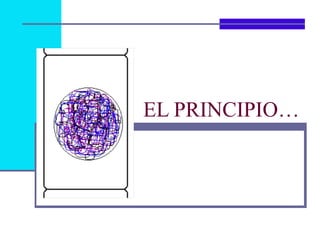
La célula eucariota y sus componentes
- 6. 1.- Nucléolo 2.- Núcleo (ADN-genes-cromosomas) 3.- Ribosoma (producción de proteinas) 4.- Vesículas de secreción 5.- Retículo endoplasmático rugoso (ribosomas-síntesis proteinas) 6.- Aparato de Golgi ( transporte, clasificación y distribución de proteínas, secreción) 7.- Citoesqueleto 8.- Retículo endoplasmático liso ( transporte y síntesis de triglicéridos y esteroides) 9.- Mitocondria (ATP-energía) 10.- Vacuola 11.- Citosol 12.- Lisosoma (digestión celular) 13.- Centríolo (división celular) 14.- Membrana celular (delimita y protege)
- 10. Conceptos PROF ROSIO ORTEGA DPTO CIENCIAS MORFOLOGICAS Y FORENSES UC
- 16. PROF ROSIO ORTEGA DPTO CIENCIAS MORFOLOGICAS Y FORENSES UC Según la forma celular Según el número de capas
- 20. GLÁNDULAS EXOCRINAS CLASIFICACIÓN PROF ROSIO ORTEGA DPTO CIENCIAS MORFOLOGICAS Y FORENSES UC
- 24. PROF ROSIO ORTEGA DPTO CIENCIAS MORFOLOGICAS Y FORENSES UC
- 30. PROF ROSIO ORTEGA DPTO CIENCIAS MORFOLOGICAS Y FORENSES UC
- 33. Neurona
- 36. Tejidos muscular PROF. ROSIO ORTEGA A. DPTO CIENCIAS MORFOLOGICAS Y FORENSES
- 45. t. óseo tejido conectivo especializado cuya matriz extracelular está calcificada e incluye a las células que la secretan. funciones: Órgano de sostén. Protección de órganos vitales. Importante en la homeostasis del calcio. Organización macroscópica: Hueso trabecular o sustancia esponjosa: finos listones que se entrecruzan,forman un reticulado esponjoso, cuyos espacio huecos están ocupados por la médula ósea. Hueso cortical o compacto: forma a simple vista una masa compacta sin espacios. T. adiposo: formado por la asociación de células que acumulan lípido en su citoplasma, los adipocitos. funciones mecánicas: amortiguar, proteger , rellenar metabólicas: generar grasas
- 48. Tejido saguíneo Es un tipo de tejido conectivo, liquido, dentro de los vasos sanguíneos Tejido Epitelial Tejido óseo Tejido cartilaginoso Tipo de t conectivo en los extremos de los huesos Tipo de t conjuntivo
Notas del editor
- PROF ROSIO ORTEGA
- PROF ROSIO ORTEGA
- PROF ROSIO ORTEGA